Numerical Investigation of Thermal Buoyancy, the Electromagnetic Force and Forced Convection in Conventional RF Systems for 4-Inch Sic by TSSG
Abstract
1. Introduction
2. Process and Model Descriptions
2.1. Geometric Model
2.2. Governing Equation
2.3. Numerical Method
3. Results and Discussion
3.1. Distribution of the Temperature
3.2. Distribution of the Buoyancy and Electromagnetic Force
3.3. Effect of Forced Convection on the Growth Stability
4. Conclusions
Author Contributions
Funding
Acknowledgments
Conflicts of Interest
References
- Nee, H.P.; Rabkowski, J. High-efficiency power conversion using silicon carbide power electronics. Mater. Sci. Forum 2014, 1083, 778–780. [Google Scholar] [CrossRef]
- Biela, J.; Schweizer, M.; Waffler, S.; Kolar, J.W. SiC versus Si—Evaluation of potentials for performance improvement of inverter and DC–DC converter systems by SiC power semiconductors. IEEE Trans. Ind. Electron. 2011, 58, 2872. [Google Scholar] [CrossRef]
- Chaussende, D.; Pons, M.; Wellmann, P. Status of SiC bulk growth processes. J. Phys. D: Appl. Phys. 2007, 40, 6150. [Google Scholar] [CrossRef]
- Hofmann, D.H.; Muller, M.H. Prospects of the use of liquid phase techniques for the growth of bulk silicon carbide crystals. Mater. Sci. Eng. B 1999, 61, 29–39. [Google Scholar] [CrossRef]
- Yamamoto, Y.; Harada, S. Low-dislocation-density 4H-SiC crystal growth utilizing dislocation conversion during solution method. Appl. Phys. Express 2014, 7, 065501. [Google Scholar] [CrossRef]
- Mercier, F.; Dedulle, J.M.; Chaussende, D.; Pons, M. Coupled heat transfer and fluid dynamics modeling of high-temperature SiC solution growth. J. Cryst. Growth 2010, 312, 155–163. [Google Scholar] [CrossRef]
- Mercier, F.; Nishizawa, S.I. Solution growth of SiC from silicon melts: Influence of the alternative magnetic field on fluid dynamics. J. Cryst. Growth 2011, 318, 385. [Google Scholar] [CrossRef]
- Yamamoto, T.; Adkar, N.; Okano, Y.; Ujihara, T.; Dost, S. Numerical investigation of the transport phenomena occurring in the growth of SiC by the induction heating TSSG method. J. Cryst. Growth 2017, 474, 50–54. [Google Scholar] [CrossRef]
- Umezaki, T.; Koike, D.; Horio, A.; Harada, S. Increase in the growth rate by rotating the seed crystal at high speed during the solution growth of SiC. Mater. Sci. Forum 2014, 63, 778–780. [Google Scholar] [CrossRef]
- Umezaki, T.; Koike, D.; Harada, S.; Ujihara, T. Analysis of the carbon transport near the growth interface with respect to the rotational speed of the seed crystal during top-seeded solution growth of SiC. J. Jpn. Appl. Phys. 2016, 55, 125601. [Google Scholar] [CrossRef]
- Yamamoto, T.; Okano, Y.; Ujihara, T.; Dost, S. Global simulation of the induction heating TSSG process of SiC for the effects of Marangoni convection, free surface deformation and seed rotation. J. Cryst. Growth 2017, 470, 75–88. [Google Scholar] [CrossRef]
- Lefebure, J.; Dedulle, J.M.; Ouisse, T. Modeling of the growth rate during top seeded solution growth of SiC using pure silicon as a solvent. Cryst. Growth Des. 2012, 12, 909–913. [Google Scholar] [CrossRef]
- Kusunoki, K.; Okada, N.; Kamei, K.; Moriguchi, K.; Daikoku, H.; Kado, M.; Sakamoto, H.; Bessho, T.; Ujihara, T. Top-seeded solution growth of three-inch-diameter 4H-SiC using convection control technique. J. Cryst. Growth 2014, 395, 68–73. [Google Scholar] [CrossRef]
- Tsunooka, Y.; Kokubo, N.; Hatasa, G.; Harada, S.; Tagawa, M.; Ujihara, T. High-speed prediction of computational fluid dynamics simulation in crystal growth. CrystEngComm 2018, 20, 6546–6550. [Google Scholar] [CrossRef]
- Mercier, F.; Nishizawa, S. Numerical investigation of the growth rate enhancement of SiC crystal growth from silicon melts. Jpn. J. Appl. Phys. 2011, 50, 035603. [Google Scholar] [CrossRef]
- Muller, G.; Neumann, G.; Weber, W. Natural convection in vertical Bridgman configurations. J. Cryst. Growth 1984, 70, 78–93. [Google Scholar] [CrossRef]
- Touihri, R.; Hadid, H.B.; Henry, D. On the onset of convective instabilities in cylindrical cavities heated from below. Phys. Fluids 1999, 11, 2078. [Google Scholar] [CrossRef]
- Ha, M.-T.; Yu, Y.-J.; Shin, Y.-J.; Bae, S.-Y.; Lee, M.-H.; Kim, C.-J.; Jeong, S.-M. Flow modification enhancing the growth rate in top seeded solution growth of SiC crystals. RSC Adv. 2019, 9, 26327–26337. [Google Scholar] [CrossRef]
- Ha, M.T.; Shin, Y.J.; Lee, M.H.; Kim, C.-J.; Jeong, S.-M. Effects of the Temperature Gradient Near the Crystal-Melt Interface in Top Seeded Solution Growth of SiC Crystal. Physica Status Solidi A 2018, 215, 1701017. [Google Scholar] [CrossRef]
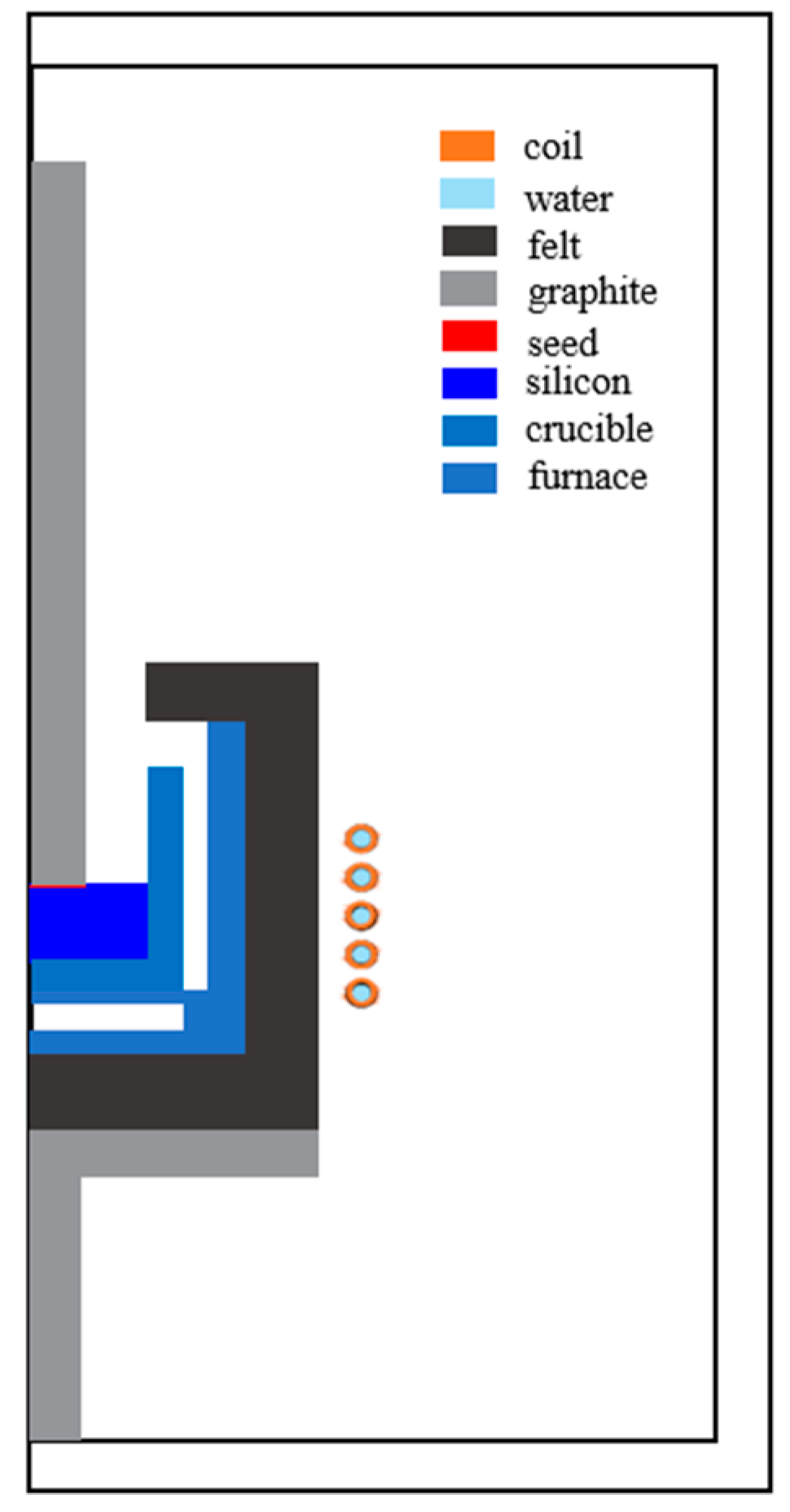
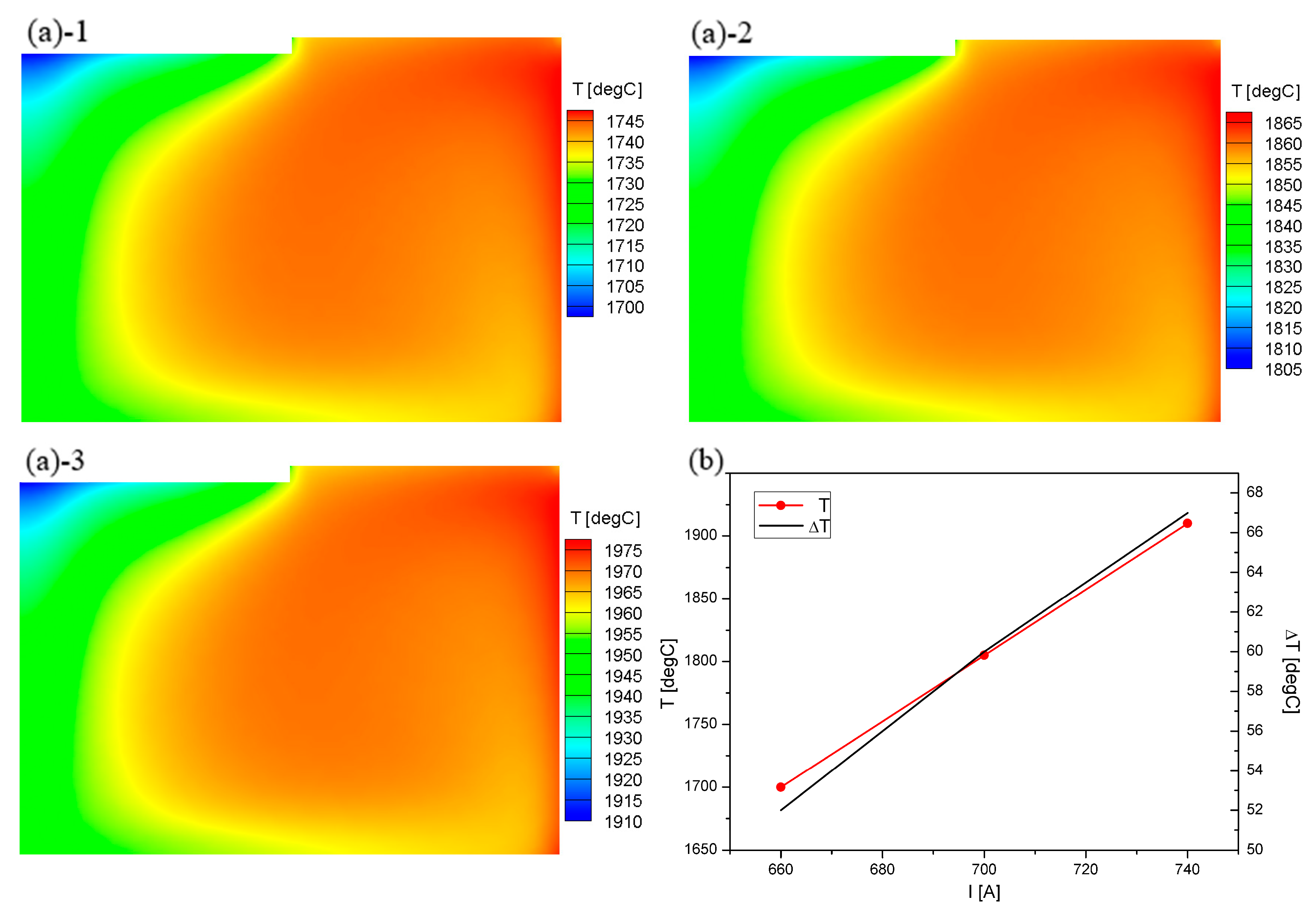
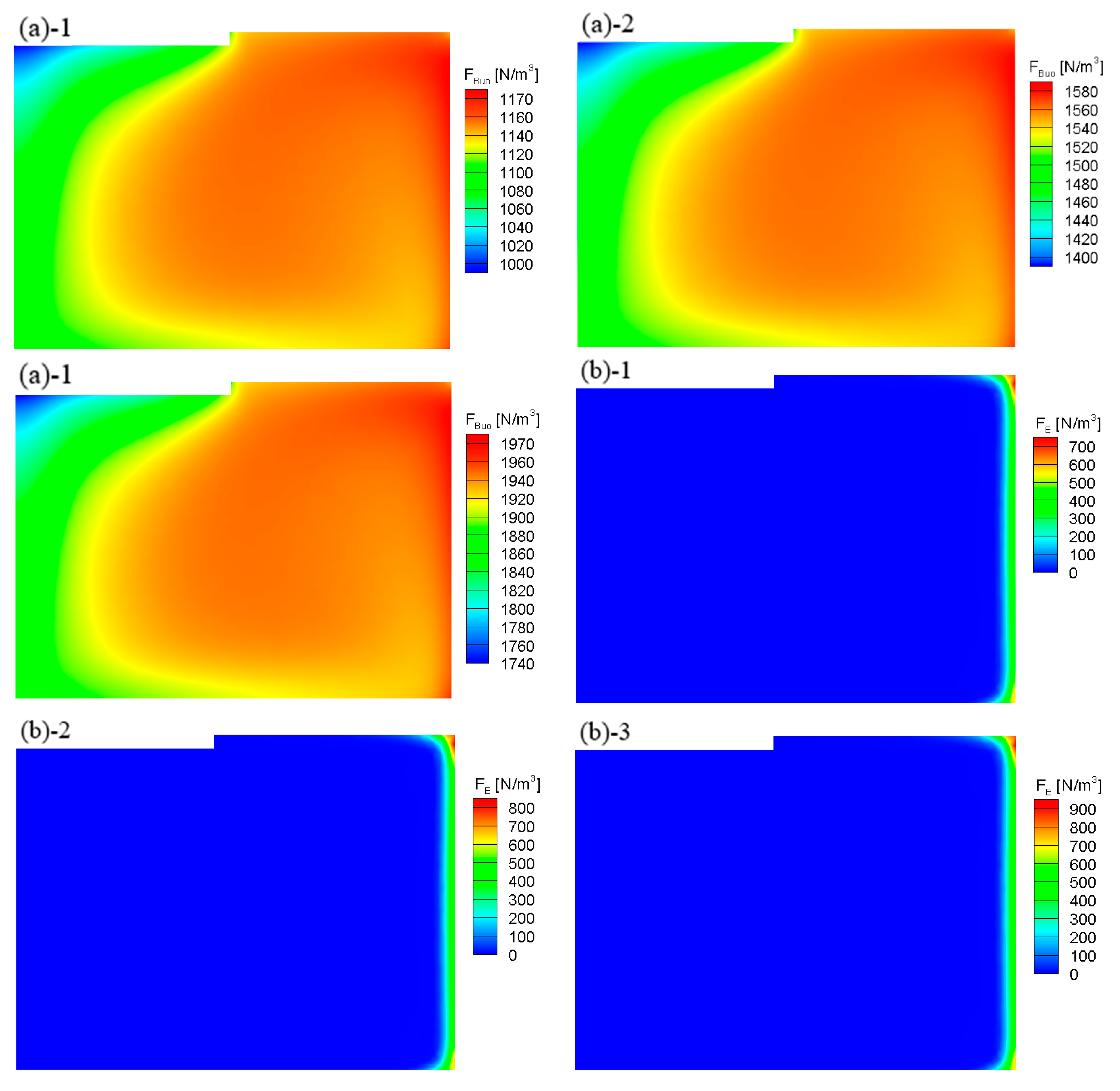
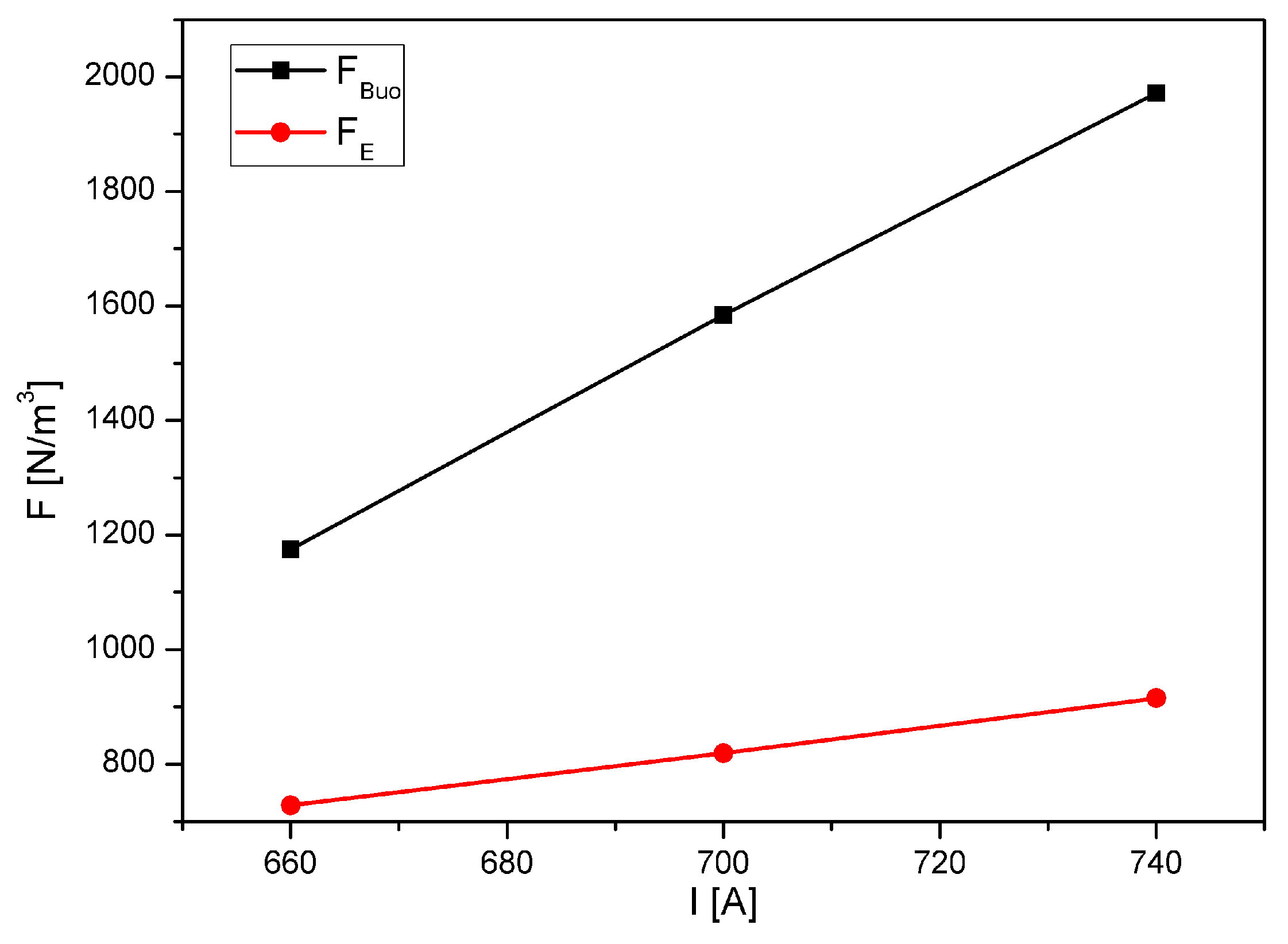
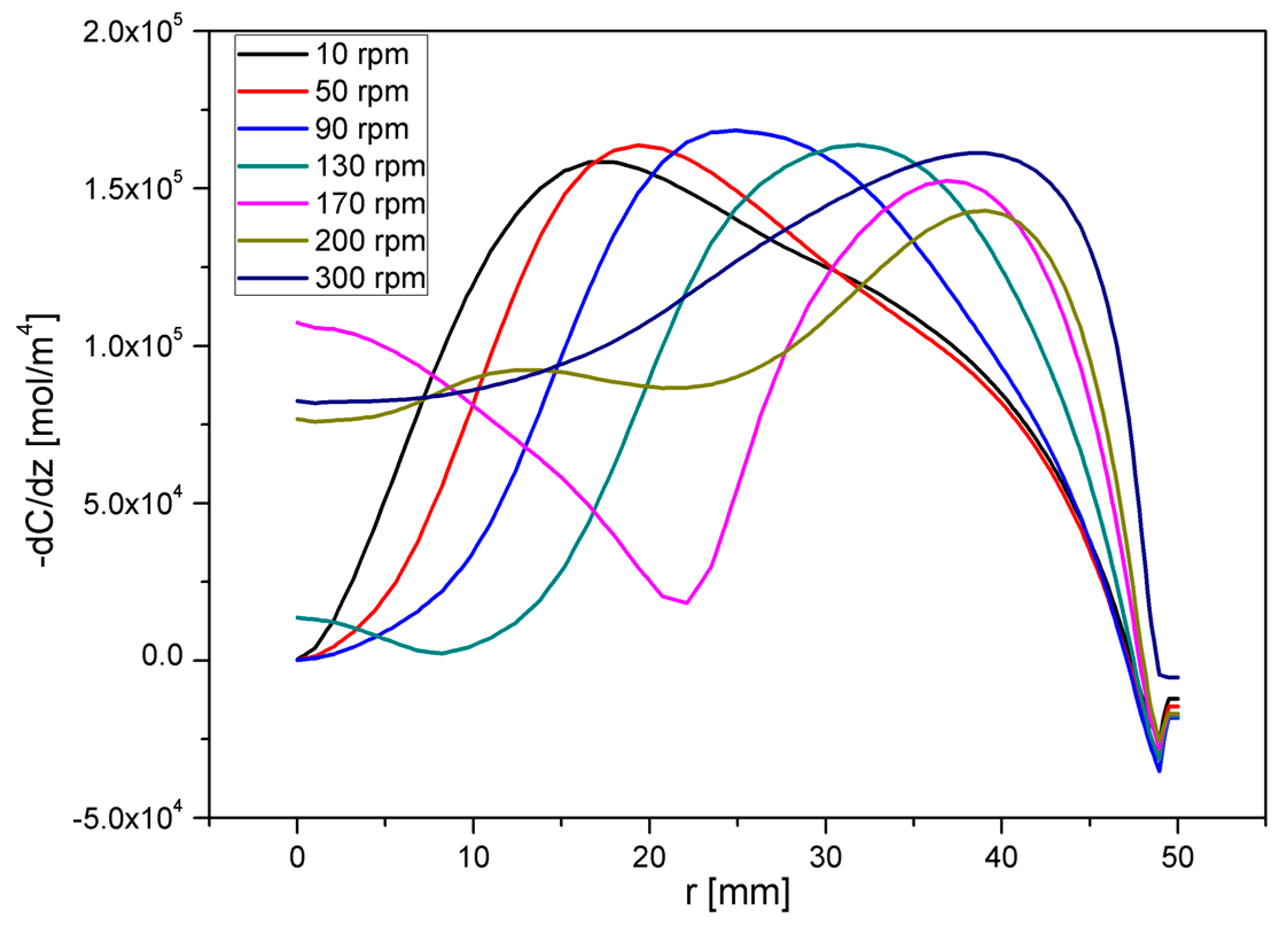
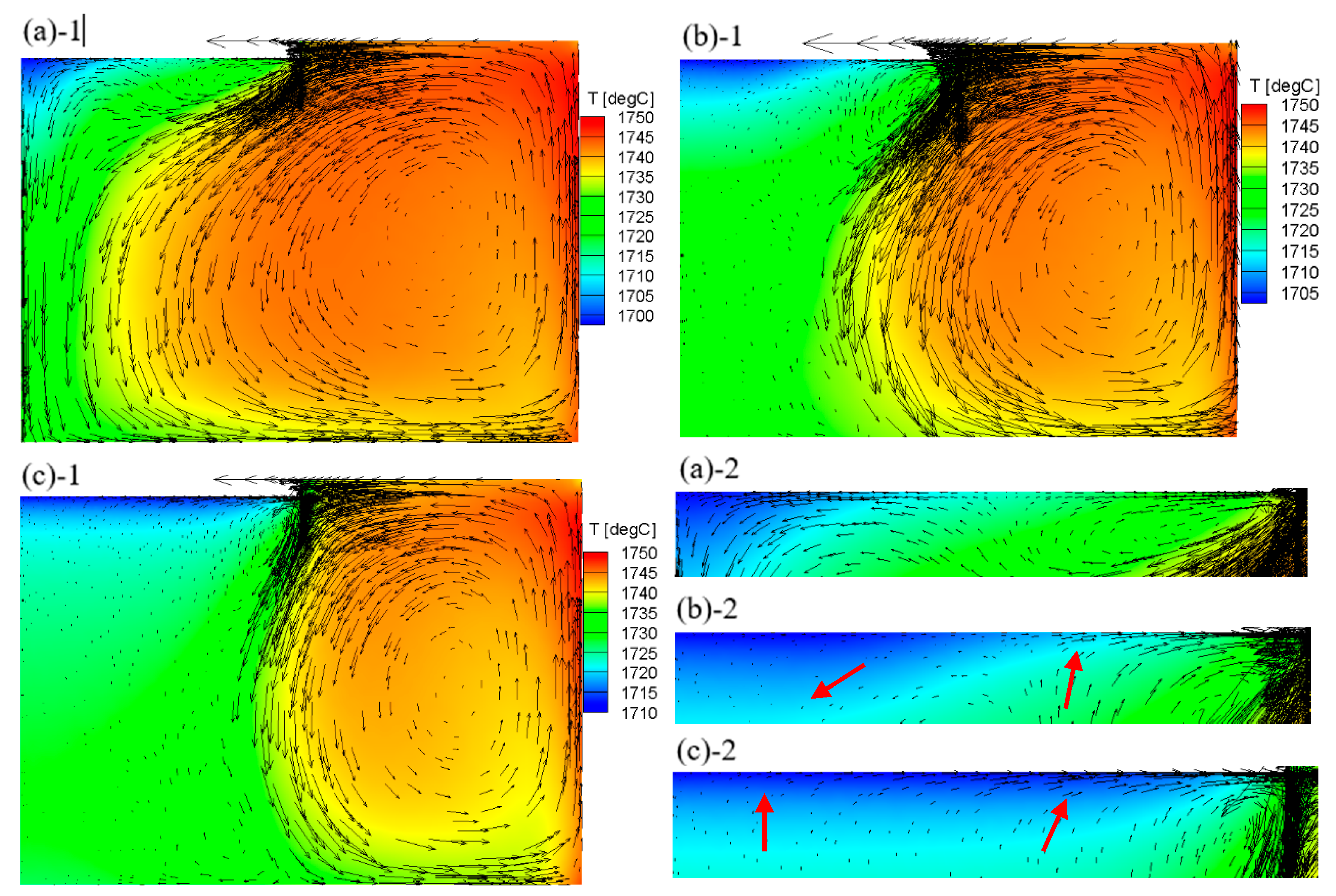
© 2019 by the authors. Licensee MDPI, Basel, Switzerland. This article is an open access article distributed under the terms and conditions of the Creative Commons Attribution (CC BY) license (http://creativecommons.org/licenses/by/4.0/).
Share and Cite
Liu, B.; Tang, X.; Yu, Y.; Gao, B. Numerical Investigation of Thermal Buoyancy, the Electromagnetic Force and Forced Convection in Conventional RF Systems for 4-Inch Sic by TSSG. Crystals 2019, 9, 516. https://doi.org/10.3390/cryst9100516
Liu B, Tang X, Yu Y, Gao B. Numerical Investigation of Thermal Buoyancy, the Electromagnetic Force and Forced Convection in Conventional RF Systems for 4-Inch Sic by TSSG. Crystals. 2019; 9(10):516. https://doi.org/10.3390/cryst9100516
Chicago/Turabian StyleLiu, Botao, Xia Tang, Yue Yu, and Bing Gao. 2019. "Numerical Investigation of Thermal Buoyancy, the Electromagnetic Force and Forced Convection in Conventional RF Systems for 4-Inch Sic by TSSG" Crystals 9, no. 10: 516. https://doi.org/10.3390/cryst9100516
APA StyleLiu, B., Tang, X., Yu, Y., & Gao, B. (2019). Numerical Investigation of Thermal Buoyancy, the Electromagnetic Force and Forced Convection in Conventional RF Systems for 4-Inch Sic by TSSG. Crystals, 9(10), 516. https://doi.org/10.3390/cryst9100516





